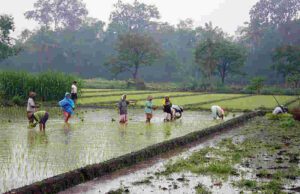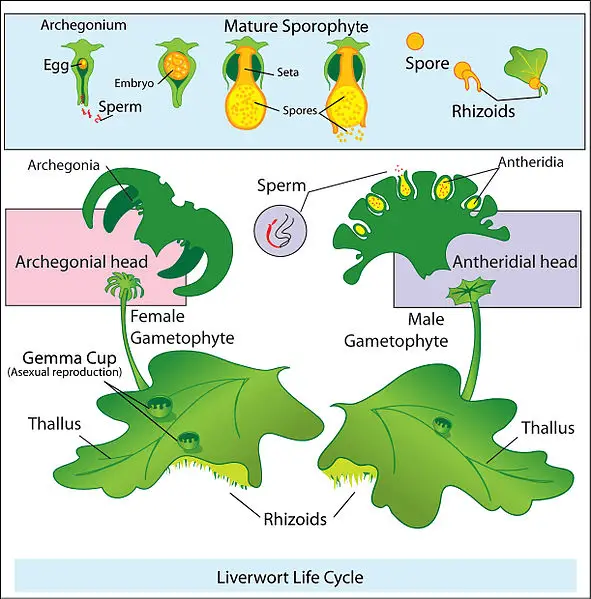9 Disadvantages of Sustainable Agriculture Fully Explained
Disadvantages of sustainable agriculture are; high labor-demand, time consumption, limited production potential, high capital cost, requirement of specialized knowledge, infrastructural limitations, need for close monitoring, storage and marketing challenges, conflicting opinions and limited adoption.
Each of these disadvantages is discussed in this article as follows;
1). High Labor Demand as one of the Disadvantages of Sustainable Agriculture
More labor is generally required in sustainable agriculture than in conventional approaches.
This is because sustainable agriculture generally seeks to reduce the dependence on mechanized and artificial techniques for farming.
Practices of sustainable agriculture like biodynamics and organic farming are designed to adopt and apply manual methods that do not disrupt biological processes that occur naturally in the ecosystem.
In order to be environment-friendly, the practice of sustainable agriculture requires that care be taken to use organic means for the production of crops and livestock, as well as for the control of weeds, pests and diseases.
Reducing the use of all forms of artificial methods and materials in agriculture, invariably increases the amount of manual labor that must be done. This is a significant economic drawback of sustainable agriculture.

2). Time Consumption as one of the Disadvantages of Sustainable Agriculture
Because of the relative complexity of sustainable agricultural practices, longer periods of time are usually consumed in sustainable agriculture, relative to conventional approaches.
The reduced use of machines, genetic modification and chemicals implies that cultivation of crops, rearing of livestock, weed, pest and disease management, harvest, food processing and raw material supply will be done mostly by manual means. A manual and natural approach to farming consumes more time than mechanized or artificial methods.
Higher demand for time also implies higher cost of farming. This makes sustainable agriculture to be relatively-expensive.
3). Limited Production Potential
Although it is widely believed that sustainable methods are associated with increased productivity, applying the principles of sustainable agriculture can in fact limit the production potential of farming.
There are various ways by which this may occur. One of them is through conservation.
A major objective of sustainable farming is to be conservative while being productive. Different types of conservation are practiced in sustainable farming, including energy conservation, soil conservation, water conservation, and financial conservation.
When land (space) is conserved in sustainable agriculture, production is often less than its potential when more land is used. This is in spite of the application of innovative techniques like crop rotation, integrated management and hydroponics to optimize productivity and resource-efficiency.
Other forms of conservation can also reduce production.
The need for higher investment, time and labor can reduce productivity of sustainable agriculture, alongside the need for specialized knowledge, and limitations of available methods, materials and technologies.
4). High Capital Cost as one of the Disadvantages of Sustainable Agriculture
Aspects of sustainable agriculture are associated with relatively-high cost. This is a result of multiple factors.
One of the causes of the high cost of sustainable agriculture is waste management. Waste-to-energy processes which are often used to produce biofuel and renewable energy from agricultural waste, can be expensive.
Equipment for organic farming and other sustainable practices, may also be capital-intensive. High labor costs are incurred due to the increased demand for labor in sustainable farming [3].
Biological control, organic soil amendment and eco-friendly crop production may also incur significant expenses for sustainable farmers. Low rates of adoption may cause sustainable agricultural practices and products to be expensive.
5). Sustainable Agriculture Requires Specialized Knowledge
Expert knowledge is the basis of sustainable agriculture, and has led to the development of many sustainable methods of farming [1].
As a result, in order for sustainable agriculture to be practiced effectively, farmers must be equipped with such knowledge in whatever specialty of farming they are involved.
In addition to specialized knowledge, sustainable farmers must be able to continuously adapt and adopt new techniques to optimize their production strategy, while being up to date with innovations in sustainable farming tools and methods.
For organic, environment-friendly approaches to succeed, the farmer must be able to analyze the specific ecologic and environmental conditions of the agricultural ecosystem. Based on this knowledge, the most suitable techniques and equipment can be selected.
These intellectual requirements are among the most significant disadvantages of sustainable agriculture, as many farmers are not equipped with the knowledge or expertise needed to succeed in sustainable agriculture. The result of this is more expenses, either in the form of economic losses due to mismanagement, expenditure to acquire knowledge or cost of purchasing expert services.

6). Infrastructural Limitations
There are limitations to the availability of infrastructure for sustainable agriculture [6]. This is with respect to various categories of infrastructure, such as technical and social categories.
In the area of technical infrastructure, many developing regions are limited in their ability to practice sustainable agriculture, by the absence of suitable and effective technologies. This lack can be attributed to factors such as the status of technological adoption, economic conditions and available skill to handle such technology.
Social infrastructure like tax and policy systems may also be undeveloped or inadequate. Socioeconomic challenges like lack of subsidy programs and difficult certification procedures are potential disadvantages of sustainable agriculture.
7). Need for Close Monitoring as one of the Disadvantages of Sustainable Agriculture
Because of the continuous research and development involved in sustainable agriculture, close monitoring is usually required to observe the effectiveness of sustainable methods of farming [5].
Close monitoring is also needed due to the highly-specified requirements of sustainable agriculture.
Ensuring that crop and livestock yields are productive, while controlling weeds, pests and diseases, is impossible without careful decision-making and effective management.
The need for close monitoring in sustainable agriculture increases cost, labor and complexity of farming.
8). Challenges of Storage and Marketing
Biodegradation of sustainable agricultural products is believed to occur at a rapid rate compared to conventional agricultural products [2].
The result of this is a high perishability rate and short shelf life for such products. Storage of sustainable food products is therefore more difficult and risk-prone than for conventional food products.
Due to the cost of small-scale sustainable farming, some organic food products may be expensive. Also, the doubtful opinions of consumers with regards to these products may affect their marketing prospects. This poses the risk of economic losses to sustainable farmers.
9). Conflicting Public Opinion and Adoption
There are different views held by various groups with regard to sustainable agriculture [4].
These views are often supported by observations that discredit the assumed benefits of sustainable farming.
For example, while sustainable methods are claimed to be safer and more productive than convention ones, many of these conventional approaches have their unique functions to the crops, livestock and entire ecosystem, which cannot easily be provided by sustainable practices.
Some agricultural challenges like soil infertility, environmental degradation, weeds, pests and diseases, may require artificial methods to be effectively addressed, especially in severe circumstances. This makes it arguable that sustainable farming has limited effectiveness.
Some of the dietary needs of the population and ecologic needs of the environment may also be unmet by sustainable methods alone, leading to poor nutrition, economic deficiency and environmental instability. These arguments have hindered the progress and adoption of sustainable agriculture.
Conclusion
The drawbacks of sustainable agriculture are;
- High Labor Demand
- Time Consumption
- Limited Production Potential
- High Capital Cost
- Sustainable Agriculture Requires Specialized Knowledge
- Infrastructural Limitations
- Need for Close Monitoring
- Challenges of Storage and Marketing
- Conflicting Public Opinion and Adoption
References
1). Carolan, M. S. (2006). “Sustainable Agriculture, Science and the Co-Production of ‘Expert’ Knowledge: The Value of Interactional Expertise.” Local Environment 11(4):421-431. Available at: https://doi.org/10.1080/13549830600785571. (Accessed 20 July 2022).
2). Ceglie, F. G.; Amodio, M. L.; Colelli, G. (2016). “Effect of Organic Production Systems on Quality and Postharvest Performance of Horticultural Produce.” Horticulturae 2(2):4. Available at: https://doi.org/10.3390/horticulturae2020004. (Accessed 20 July 2022).
3). Chotangui, A. H. (2020). “Impact of sustainable agricultural practices on farmers’ production cost in the Noun Division, West Region of Cameroon: policy recommendation.” Available at: https://www.researchgate.net/publication/343400095_Impact_of_sustainable_agricultural_practices_on_farmers’_production_cost_in_the_Noun_Division_West_Region_of_Cameroon_policy_recommendation. (Accessed 20 July 2022).
4). Kroeksakul, P.; Srichaiwong, P. (2015). “The Viewpoints of Sustainable Agriculture within the System Approach in Agriculture.” Available at: https://www.researchgate.net/publication/326878656_The_Viewpoints_of_Sustainable_Agriculture_within_the_System_Approach_in_Agriculture. (Accessed 20 July 2022).
5). Laborde, D.; Piñeiro, V. (2018). “Monitoring agricultural productivity for sustainable production and R&D planning.” Economics E-Journal 12(1). Available at: https://doi.org/10.5018/economics-ejournal.ja.2018-66. (Accessed 20 July 2022).
6). Olabomi, R.; Ogundola, J.; Yakubu, A. M.; Bola, A. G.; Adetoro, V. A.; Nwubani, O. W. (2021). “SUSTAINABLE AGRICULTURAL INFRASTRUCTURE AND DEVELOPMENT OF RURAL ECONOMY IN NIGERIA.” Available at: https://doi.org/10.26480/seps.02.2021.72.78. (Accessed 20 July 2022).


